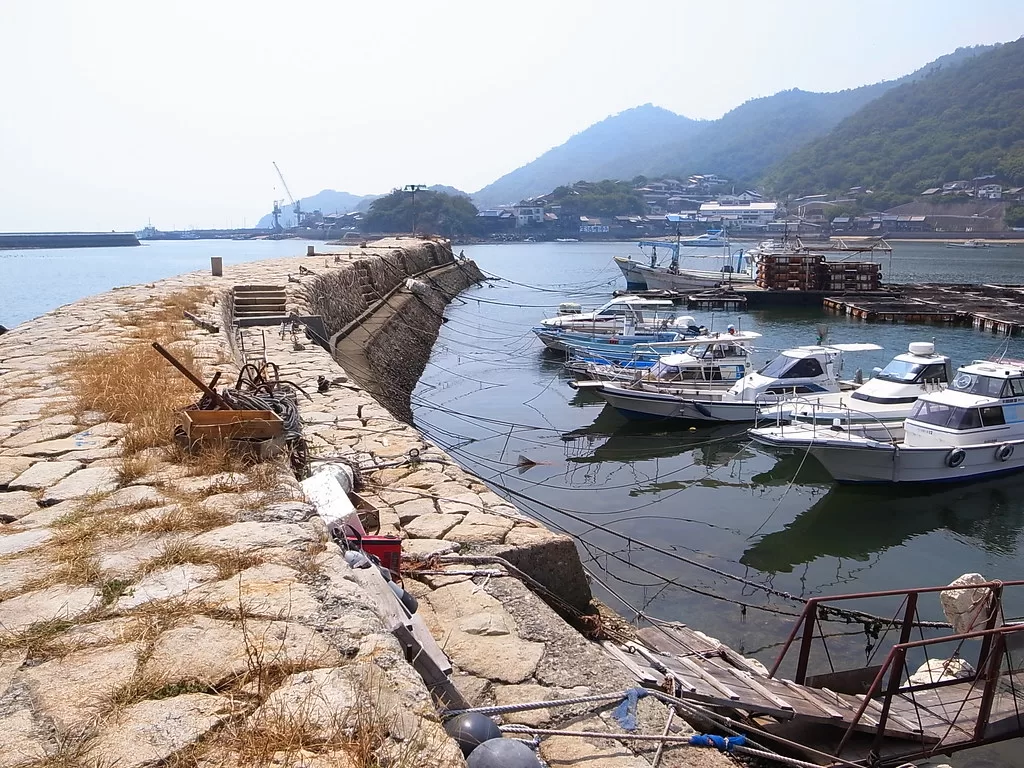
Tomonoura is a village in Hiroshima prefecture located on the Seto Inland Sea coast and is part of the Setonaikai National Park. Its pristine natural landscape and the absence of industrialization and modernization have preserved the town’s original charm to this day.
Tomonoura has also safeguarded numerous historical structures from the Edo period (1603-1868), making it a rare gem among coastal towns in Japan. With a population of around 3,350 people, Tomonoura remains a tranquil and simple village, providing a refuge from the overcrowded conditions often found in Tokyo, Kyoto, and other popular Japanese destinations.
The village gained recent fame as the backdrop for Marvel’s “The Wolverine” and served as inspiration for Studio Ghibli’s animated film “Ponyo on the Cliff by the Sea,” directed by Hayao Miyazaki.
Despite its accessibility – just a 30-minute bus ride from Fukuyama station – many foreign tourists have yet to discover this hidden historical village.
While the origins of Tomonoura are not widely known, it has been mentioned in Japan’s eight oldest tanka poems, written between 600 and 750 AD.
Positioned on a peninsula where currents converge from both the east and west, the port town experienced economic and touristic growth. Tomonoura thrived during the era of sailboats when merchant ships traversing the Seto Inland Sea would dock at its port, awaiting favorable tides. The town center flourished with maritime activity, fostering industries such as the production of “homeishu,” a medicinal liquor made from shochu, and 16 types of herbs believed to promote longevity.
Though time has passed, first-time visitors to Tomonoura can still recognize the small circular harbor, behind which extend narrow lanes with traditional townhouses and shrines. With around 280 buildings dating back to the Edo period, Tomonoura boasts more structures related to the port than any other place in Japan.
The 11-meter-tall Joyato lighthouse is the tallest stone lighthouse in Japan and is considered the spiritual heart of the harbor, surrounded by numerous fishing boats. Beneath the lighthouse, a stone pier with 24 steps leads down to the sea, designed to facilitate the loading and unloading of goods regardless of the tide.
(Photo: Flickr)


The only road leading to the town offers breathtaking views, with mountains on one side and the sea on the other. Exploring the town on foot is the best way to experience its unique atmosphere, showcasing the fullness of rural life – people walking their dogs, fishing boats coming and going
(Photo: Wikimedia Commons)
Affectionately called Tomo, the town evokes a sense of nostalgia, evident in establishments like Hirai Shoten. While shelves are stocked with everyday essentials like bread and dish soap, the traditional Japanese lantern at the entrance announces that the specialty of the shop is oden, a comforting Japanese dish.
(Photo: Flickr)


Ota Residence stands as the grandest residence in Tomo, a complex of 9 buildings, including a two-story main house, warehouse, and a liquor factory for producing homeishu. The Nakamura family, owners of the residence, were knowledgeable about Chinese herbs and created homeishu in 1659, a medicinal liquor using 16 types of herbs and plants. They were subsequently granted exclusive production and sales rights, maintaining this privilege throughout the Edo period.
(Photo: Wikipedia)
Another long-standing industry in Tomonoura is metalworking, as all the waiting ships needed anchors and nails. While there are still about 10 companies today, Sangyo Corporation is the only one employing not only modern computer techniques but also traditional methods.
(Photo: CNN Travel)




